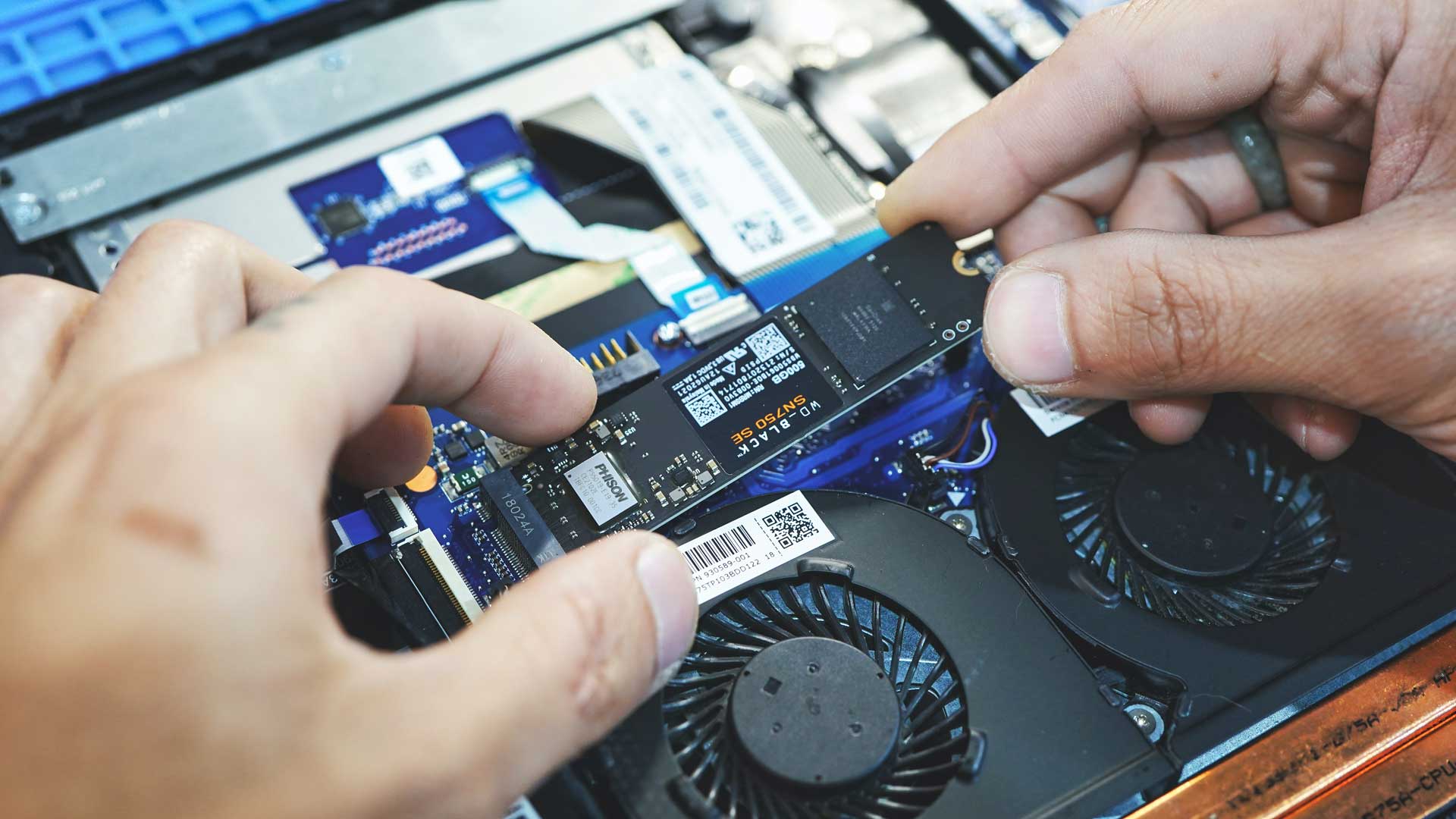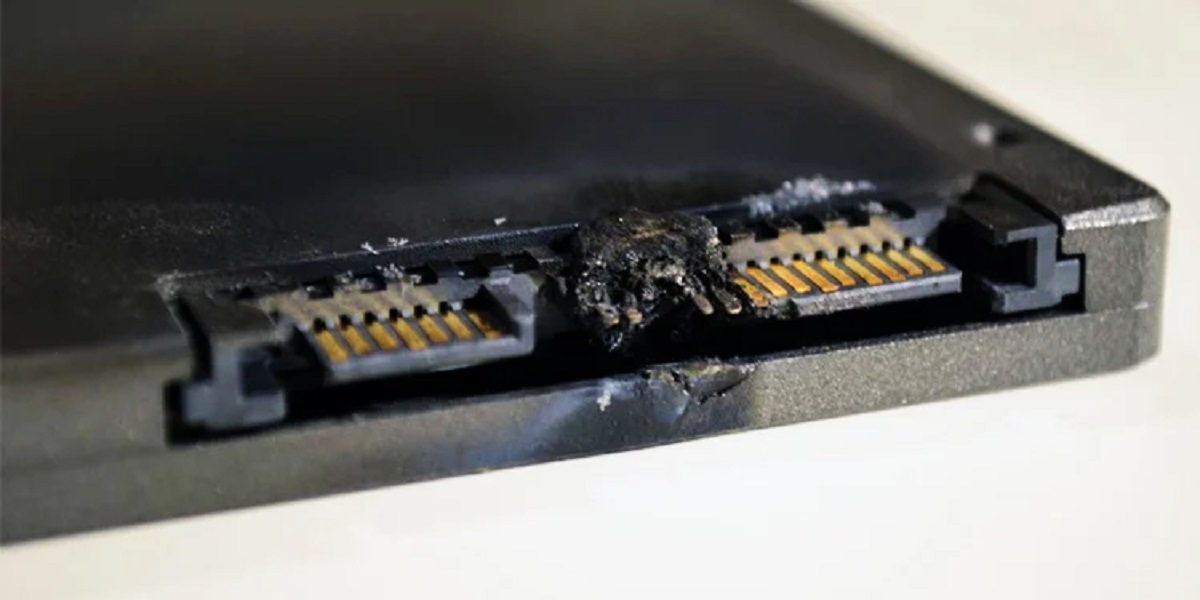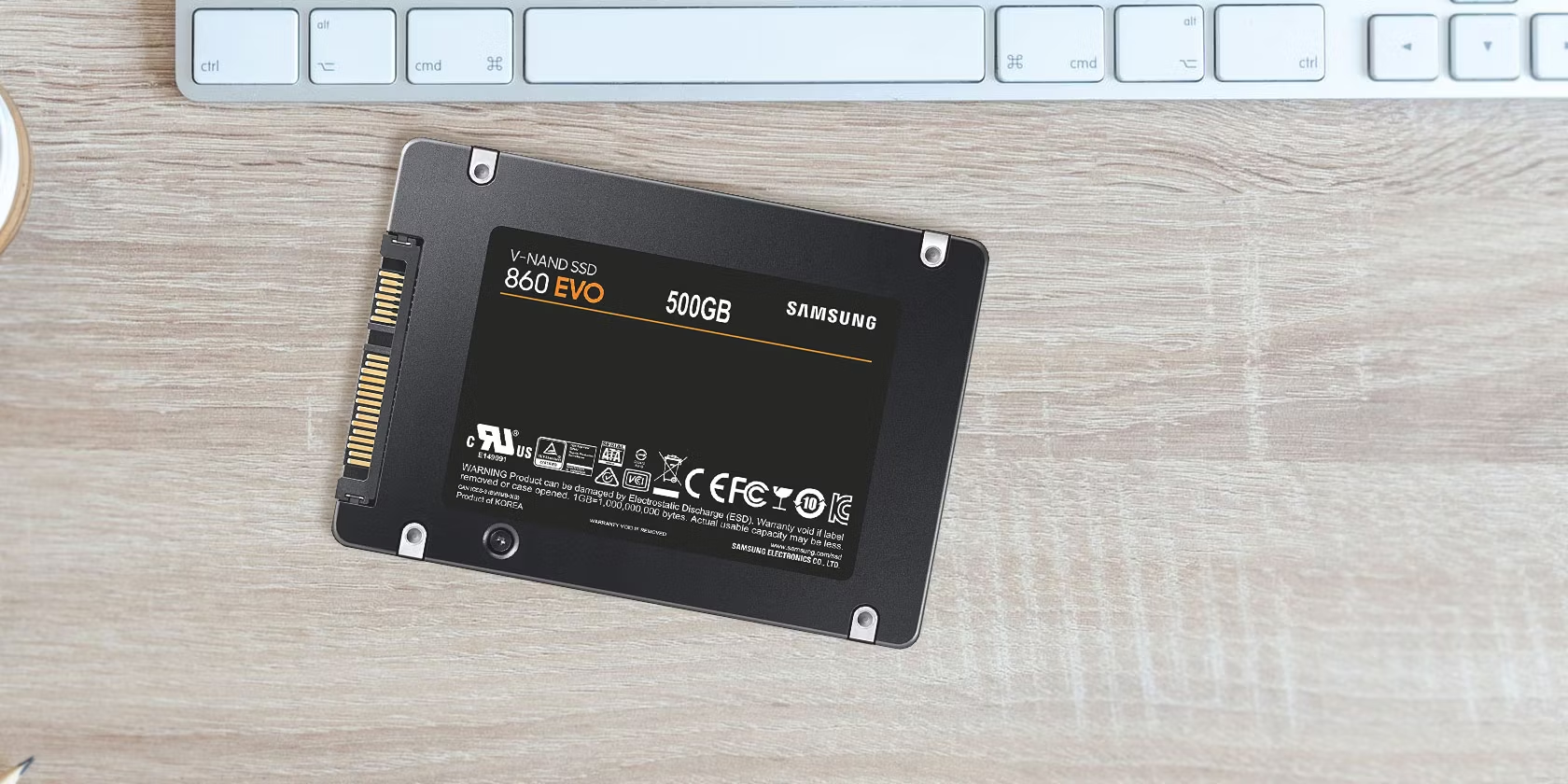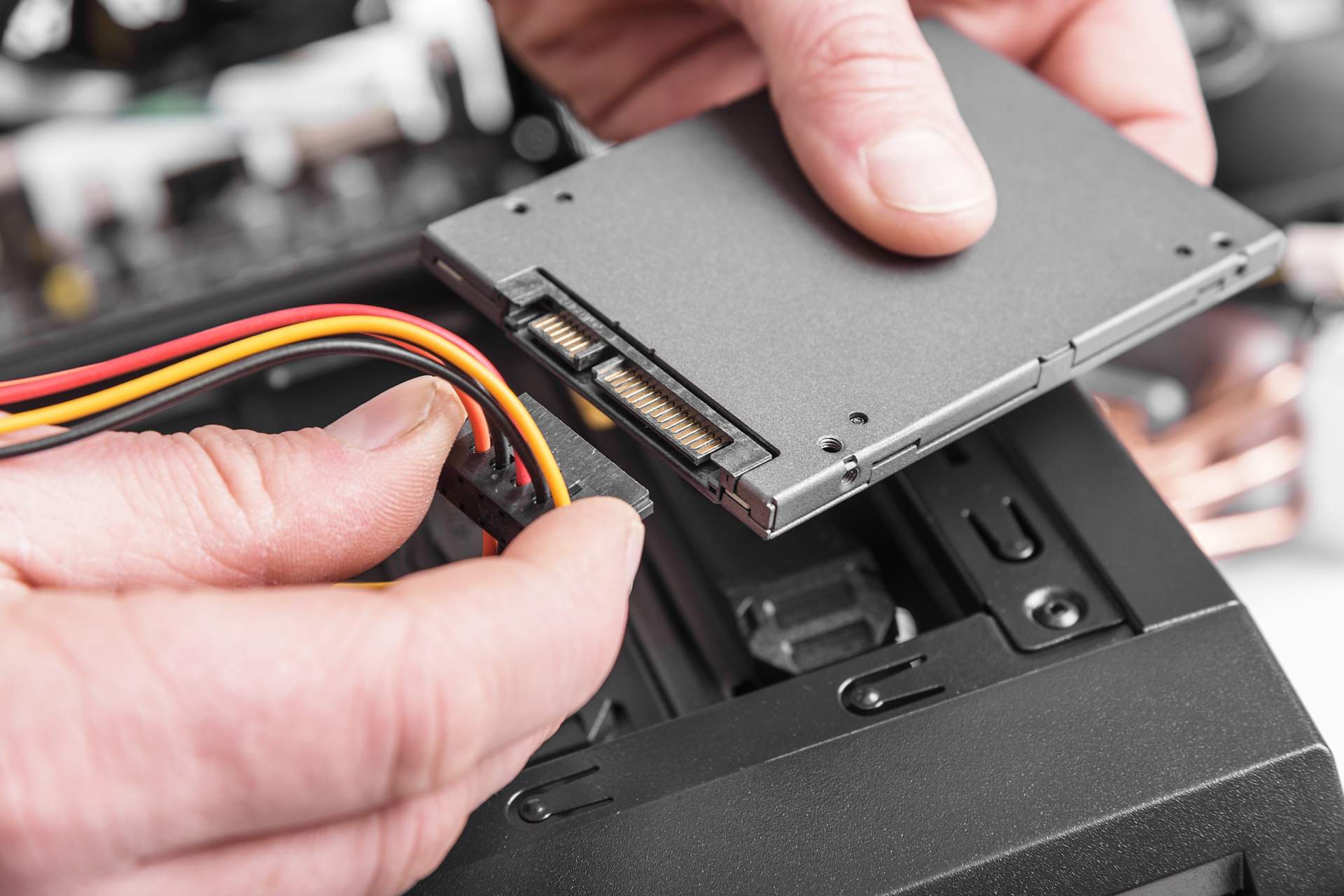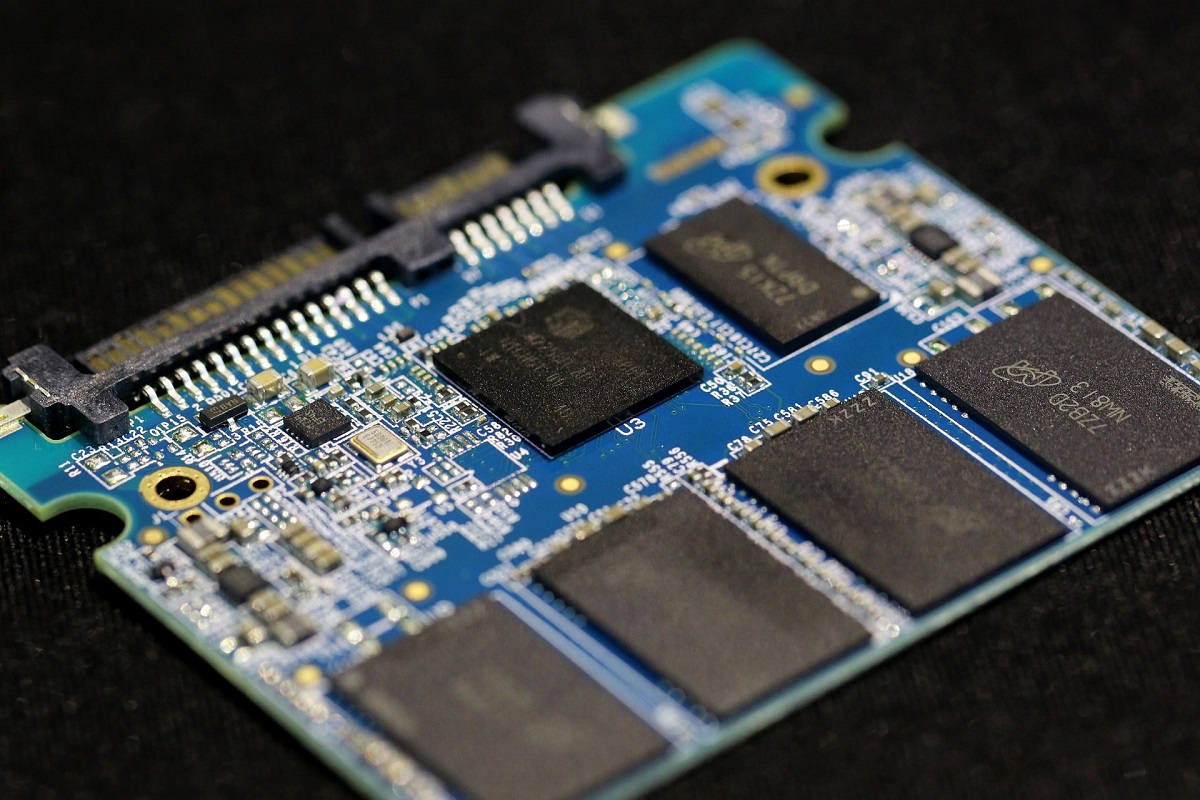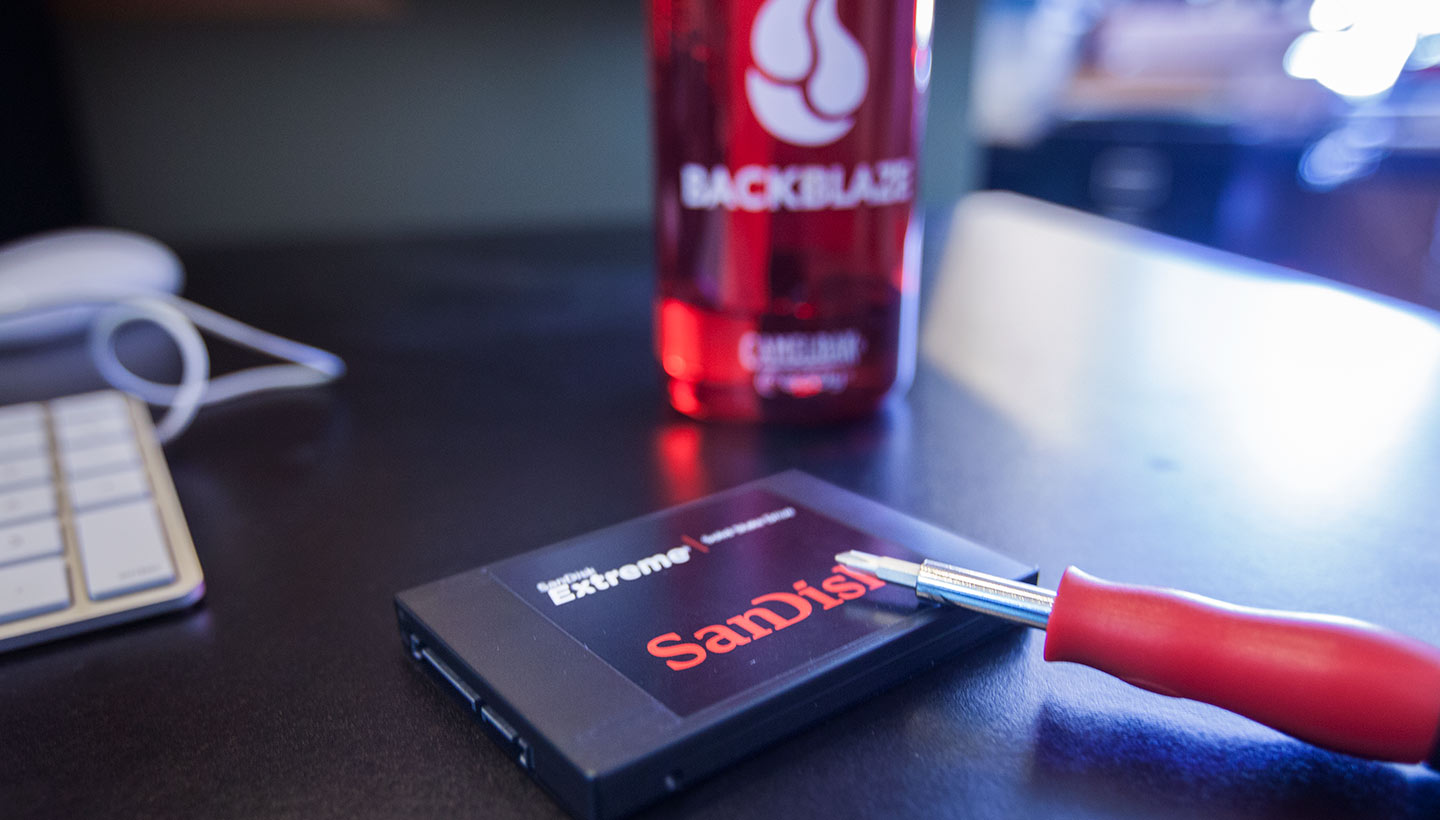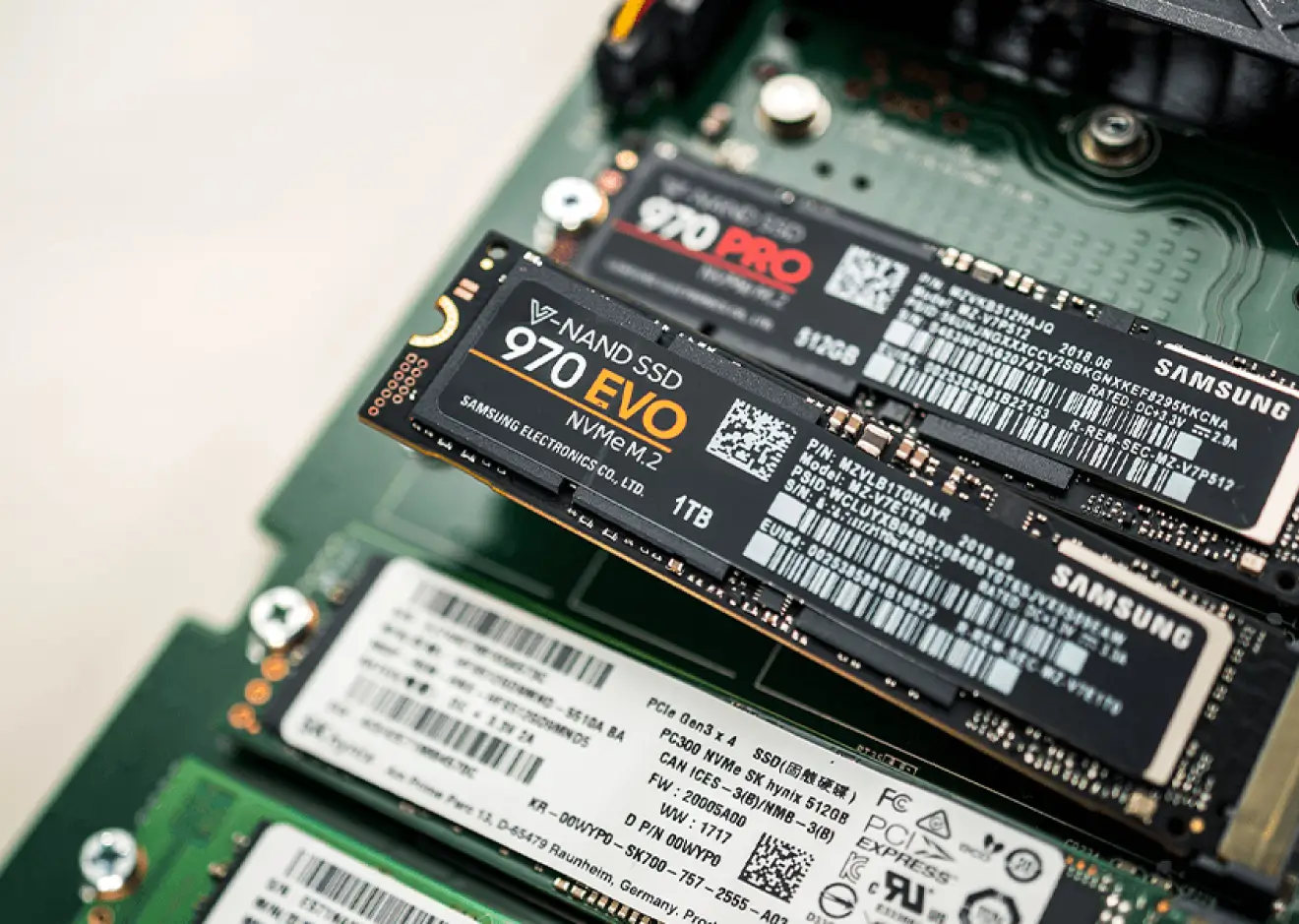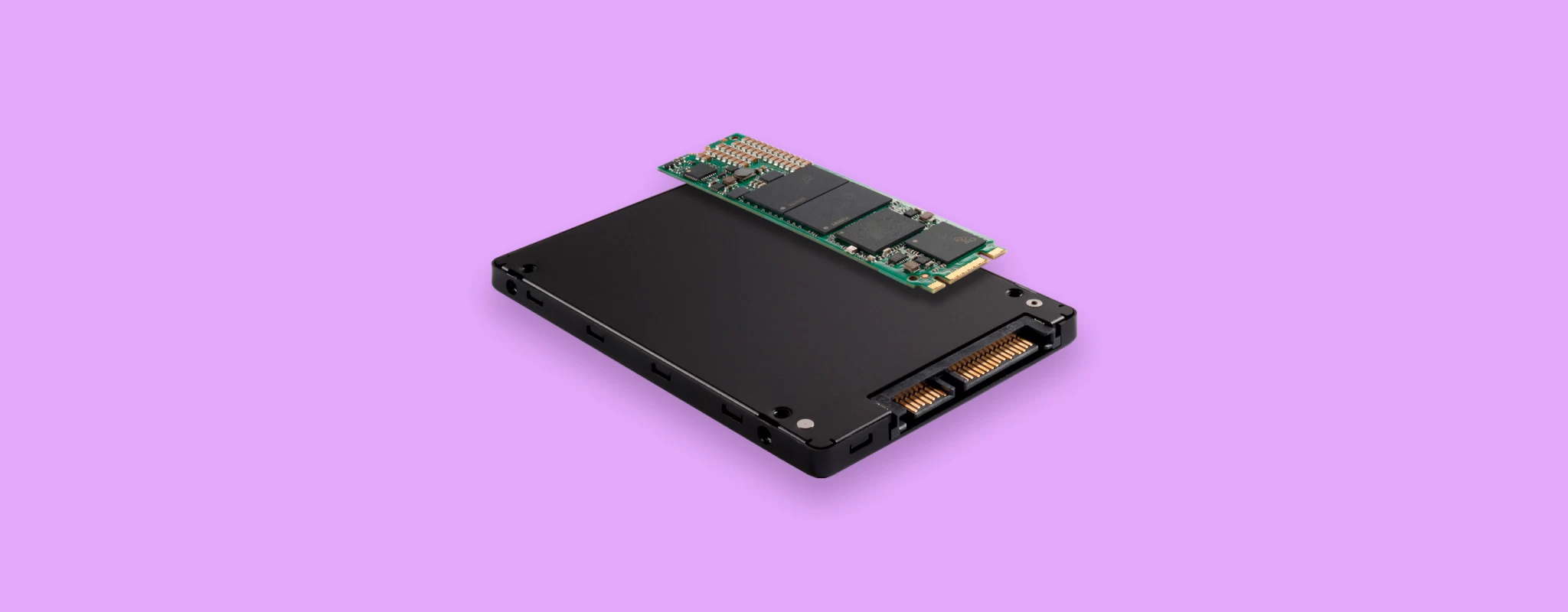Common Causes of SSD Failure
SSDs (Solid State Drives) are known for their fast performance and reliability, but they can still experience failure under certain circumstances. Understanding the common causes of SSD failure can help you take preventive measures and ensure the longevity of your SSD. Here are some of the most prevalent causes:
-
Power Outages and Electrical Surges
Power outages and electrical surges can pose a significant risk to SSDs. When power is abruptly cut off or fluctuates, it can lead to data corruption or damage to the SSD’s firmware. It is essential to use surge protectors and uninterrupted power supply (UPS) units to safeguard your SSD from these power-related issues.
-
Firmware Issues
Firmware is a software program embedded within the SSD that manages its operations. Outdated or faulty firmware can cause compatibility issues, data corruption, or even complete device failure. Keeping your SSD’s firmware updated with the latest patches and releases is crucial to avoid such problems.
-
Overheating
Excessive heat can degrade the performance and lifespan of an SSD. A high operating temperature can lead to data loss, reduced read/write speeds, and eventually, complete failure. Ensuring proper airflow and using cooling solutions, such as heat sinks or fans, can mitigate the risk of overheating.
-
Wear and Tear
While SSDs have no moving parts like traditional hard drives, they still have a limited lifespan due to the nature of their NAND flash memory cells. Continuous usage, extensive read/write operations, and reaching the maximum write capacity of the SSD can lead to cell degradation, causing failures over time.
-
NAND Flash Degradation
NAND flash memory cells have a limited number of write cycles. As the SSD is used, these cells deteriorate, leading to reliability issues. Extreme usage, such as frequent large file transfers or heavy video editing, can accelerate the degradation process and shorten the SSD’s lifespan.
-
Writing Too Much Data
SSDs have a finite number of write cycles, known as program-erase cycles. Writing an excessive amount of data to the SSD, especially for extended periods, can wear out the NAND flash cells faster, reducing the overall lifespan of the drive. It is advisable to avoid unnecessary write operations and use storage optimization techniques to extend the SSD’s longevity.
-
Physical Damage or Shock
Physical damage or shock to an SSD can cause immediate failure. Dropping the device, mishandling during installation, or exposing it to extreme mechanical stress can result in a damaged internal circuitry or broken connectors. It is crucial to handle SSDs with care and protect them from accidents or impacts.
-
Data Corruption
Data corruption can occur due to various reasons, such as software errors, operating system crashes, malware infections, or improper shutdowns. When data stored on an SSD gets corrupted, it can lead to data loss or inaccessibility. Regular data backups and using reliable antivirus software can help prevent data corruption issues.
-
Incompatibility with Operating System
Some SSD models may experience compatibility issues with certain operating systems or hardware configurations. Incompatible drivers or firmware can cause instability, performance degradation, or even complete failure of the SSD. Prior to purchasing an SSD, make sure it is compatible with your intended system and has the necessary drivers or firmware available.
-
Manufacturing Defects
Although rare, manufacturing defects can occur in SSDs. These defects can manifest as intermittent failures, sudden crashes, or other abnormal behavior. In such cases, contacting the manufacturer or seeking warranty support is the recommended course of action.
By understanding these common causes of SSD failure and implementing preventive measures, such as using surge protectors, keeping firmware updated, managing heat levels, practicing proper handling, and conducting regular backups, you can optimize the lifespan and reliability of your SSD.
Power Outages and Electrical Surges
Power outages and electrical surges can pose a significant risk to the health and longevity of your SSD. When power is abruptly cut off or fluctuates, it can lead to data corruption or damage to the SSD’s firmware, resulting in potential failure.
During a power outage, the sudden loss of electricity can interrupt the SSD’s read and write operations, causing data to become corrupted or inaccessible. This can result in the loss of important files, documents, or even your operating system. Additionally, power fluctuations, such as spikes or surges, can deliver excessive voltage and current to your system. These voltage irregularities can overload and damage the delicate circuitry of the SSD, leading to permanent failure.
To safeguard your SSD from power-related issues, it is essential to implement preventative measures. First, using a surge protector is crucial. A surge protector acts as a barrier between your SSD and the power outlet, filtering out excessive voltage spikes and surges. It ensures a consistent and stable supply of power to your SSD, enhancing its safety.
Furthermore, investing in an uninterrupted power supply (UPS) can offer an added layer of protection. A UPS is a battery backup system that provides temporary power in the event of a power outage. It not only serves as a surge protector but also allows you to safely shut down your computer or SSD during extended power outages, minimizing the risk of data corruption or damage.
Regularly checking and maintaining the integrity of your power supply system is also important. Ensuring that your power cables, connectors, and adapters are securely connected and free from damage can help prevent any sudden power disruptions or electrical issues.
In summary, power outages and electrical surges can be detrimental to the health of your SSD. By using surge protectors, investing in a UPS system, and ensuring proper maintenance of your power supply, you can reduce the risk of data corruption, firmware damage, and SSD failure.
Firmware Issues
The firmware of an SSD plays a crucial role in managing the drive’s performance and functionality. Firmware refers to the embedded software that controls various operations, including data reading and writing, error correction, wear leveling, and garbage collection. However, outdated or faulty firmware can lead to compatibility issues, data corruption, or even complete SSD failure.
One of the primary reasons for firmware-related issues is outdated firmware. As technology advances and new features are introduced, SSD manufacturers frequently release firmware updates to improve performance and address known issues. Ignoring or delaying these updates can result in suboptimal performance or potential compatibility issues with the operating system.
Software bugs can also cause firmware problems. These bugs can manifest in various forms, such as improper handling of specific file systems, errors in data management algorithms, or issues with power management. If left unresolved, these bugs can lead to data corruption, unexpected crashes, or instability of the SSD.
Firmware issues can also arise from inconsistencies or conflicts between the SSD’s firmware and the system’s hardware or software components. Incompatibilities in drivers, BIOS settings, or specific operating system versions can lead to performance bottlenecks, reduced functionality, or even inoperability of the SSD.
To mitigate firmware-related issues, it is crucial to regularly check for and install firmware updates provided by the SSD manufacturer. These updates often include bug fixes, performance enhancements, and compatibility improvements. It is recommended to follow the manufacturer’s instructions and guidelines when updating the firmware on your SSD.
Additionally, it is advisable to back up important data before performing any firmware updates. While rare, firmware updates can occasionally go wrong, potentially causing data loss or SSD malfunction. Having a backup ensures that your data is protected and can be restored in case of any unforeseen issues.
In summary, firmware issues can negatively impact the performance and reliability of an SSD. Keeping the firmware updated with the latest releases, checking for compatibility with hardware and software components, and maintaining regular backups are essential steps in preventing firmware-related problems and ensuring the optimal functionality of your SSD.
Overheating
Overheating is a common issue that can significantly impact the performance and lifespan of an SSD. When an SSD operates at high temperatures for prolonged periods, it can lead to various problems, including data loss, reduced read/write speeds, and even complete failure.
SSDs generate heat during normal operation, but excessive heat can degrade the components and shorten their lifespan. High ambient temperatures, inadequate airflow, insufficient cooling solutions, or cramped computer cases can contribute to overheating.
To prevent overheating, it is important to ensure proper airflow within your system. Make sure that the computer case has adequate ventilation and room for air circulation. This can be achieved by using case fans, ensuring proper cable management to avoid blocking airflow, and keeping the environment clean and dust-free.
In addition to proper airflow, you can also consider using cooling solutions specifically designed for SSDs. These may include heat sinks or cooling pads that can dissipate heat effectively and maintain the SSD’s temperature within safe limits.
Monitoring the temperature of your SSD is essential to identify potential overheating issues. Most SSD manufacturers provide software utilities or dashboard tools that display temperature information. By regularly checking the temperature and ensuring it stays within the recommended operating range, you can proactively address any potential overheating problems.
If you notice that your SSD is consistently running at high temperatures, it can be helpful to optimize your system’s cooling mechanisms. This may involve repositioning case fans, cleaning or replacing clogged heatsinks, or using thermal paste to improve heat transfer between the SSD and cooling components.
Lastly, it is crucial to avoid exposing your SSD to external heat sources. Placing your computer near direct sunlight, on top of hot surfaces, or in enclosed spaces without proper ventilation can significantly increase the chances of overheating.
In summary, preventing overheating is essential for maintaining the performance and longevity of your SSD. By ensuring proper airflow, using cooling solutions, monitoring temperature levels, and avoiding exposure to external heat sources, you can mitigate the risk of overheating and enhance the overall stability and reliability of your SSD.
Wear and Tear
Although SSDs do not have moving parts like traditional hard drives, they are still subject to wear and tear over time. The nature of solid-state technology, specifically the NAND flash memory cells used in SSDs, imposes limitations on the number of write operations they can handle before degradation occurs.
As you use your SSD, data is written and erased from the NAND flash cells. Over time, these cells deteriorate, leading to potential reliability issues. The wear and tear on the cells can result in reduced performance, increased error rates, and, eventually, complete failure of the SSD.
Several factors contribute to wear and tear on SSDs. The primary factor is the number of write and erase cycles that the NAND flash cells can endure. This value, commonly referred to as the program-erase (P/E) cycle or endurance rating, varies among different SSD models and capacities. Higher-endurance SSDs typically have a higher P/E cycle rating, allowing them to handle more write operations before degradation.
Intensive usage, such as constantly transferring large files, performing frequent system backups, or editing and saving large media files, can accelerate the wear and tear on SSDs. These operations involve a significant number of write operations, putting strain on the NAND flash cells and shortening the SSD’s lifespan.
However, it is important to note that modern SSDs are equipped with advanced wear-leveling algorithms. Wear leveling evenly distributes the write operations across all available NAND flash cells, preventing specific cells from wearing out faster than others. This technology helps to maximize the lifespan and performance of the SSD.
To mitigate the effects of wear and tear, it is advisable to follow certain best practices. Regularly backing up your data not only protects your information but also reduces the need for constant write operations on the SSD. Additionally, enabling TRIM support, a feature of modern operating systems, can help optimize the performance of the SSD and reduce unnecessary write operations.
Choosing an SSD with a higher-endurance rating can also provide a longer lifespan. When purchasing an SSD, consider the P/E cycle rating and select a model that aligns with your usage requirements.
In summary, wear and tear are inherent to SSDs due to the nature of their NAND flash memory cells. By adhering to best practices, such as performing regular backups, enabling TRIM support, and choosing SSDs with higher-endurance ratings, you can mitigate the effects of wear and tear and prolong the lifespan of your SSD.
NAND Flash Degradation
NAND flash degradation is a significant factor that can impact the performance and lifespan of an SSD. NAND flash memory, the type of memory used in SSDs, has a limited number of write cycles before it starts to degrade. Understanding the causes and implications of NAND flash degradation is crucial in maintaining the longevity of your SSD.
Each time data is written to a NAND flash cell, an electrical charge is applied to trap electrons, representing the binary state of data (0 or 1). However, with each write operation, these cells gradually wear out, making it more challenging to retain the charge. Over time, this degradation can lead to reduced performance, increased error rates, and even data loss.
Several factors contribute to NAND flash degradation. The primary factor is the number of program-erase (P/E) cycles that the NAND flash cells can endure. The endurance rating of an SSD, indicated by the manufacturer, represents the approximate number of P/E cycles it can handle. Higher-endurance SSDs typically have a greater P/E cycle rating, allowing them to withstand more write operations before degradation occurs.
In addition to the number of P/E cycles, the temperature at which an SSD operates significantly affects NAND flash degradation. High operating temperatures can accelerate the degradation process, causing the cells to wear out faster. It is important to maintain a suitable operating temperature range to minimize the impact on the SSD’s lifespan.
The type of NAND flash memory used in an SSD also plays a role in degradation. Single-level cell (SLC) NAND flash provides the highest endurance, followed by multi-level cell (MLC) and triple-level cell (TLC) NAND flash. SLC NAND flash has a lower bit density but higher durability, while TLC NAND flash offers higher bit density but reduced endurance. Considering the NAND flash type when selecting an SSD can help align the drive’s endurance capabilities with your specific usage needs.
To mitigate NAND flash degradation, it is beneficial to implement techniques that reduce unnecessary write operations. One such technique is wear leveling, which evenly distributes write operations across all available NAND flash cells. This helps prevent specific cells from wearing out faster than others, prolonging the overall lifespan of the SSD. Additionally, enabling features like TRIM support, offered by modern operating systems, can optimize the SSD’s performance and reduce unnecessary write operations.
Regularly monitoring the health and performance of your SSD through manufacturer-provided tools or utilities can also help identify any potential degradation issues. These tools often provide important information such as the remaining lifespan, total write usage, and overall health of the NAND flash cells.
In summary, NAND flash degradation is an inevitable process that impacts the lifespan and performance of an SSD. By understanding the factors that contribute to degradation, implementing techniques like wear leveling and enabling TRIM support, and monitoring the health of your SSD, you can effectively mitigate the effects of NAND flash degradation and maximize the longevity of your SSD.
Writing Too Much Data
While SSDs are designed to handle a significant amount of data, continuously writing excessive amounts of data can impact their lifespan and performance. It is important to understand the implications of writing too much data to an SSD and take measures to optimize its usage.
SSDs use a technology known as NAND flash memory, which has a limited number of program-erase (P/E) cycles. Each time data is written to the SSD, it consumes one P/E cycle. Over time, as more data is written to the SSD, the wear on the NAND flash memory cells increases.
Excessive data writing can accelerate the wear-out process of NAND flash cells, leading to reduced performance and a shorter lifespan for the SSD. This is especially true for consumer-grade SSDs that generally have lower endurance ratings compared to enterprise-grade SSDs.
To mitigate the effects of writing too much data to an SSD, it is advisable to follow certain practices. First and foremost, consider data storage optimization techniques. This involves minimizing unnecessary write operations, such as regularly deleting temporary files, clearing browser caches, and moving large file transfers to mechanical hard drives or external storage.
Utilizing storage management tools and techniques can also help. One such technique is data deduplication, which identifies and eliminates redundant data, saving space and reducing the number of write operations on the SSD. Compression and encryption techniques can also reduce the amount of data being written to the SSD.
Another consideration is using the SSD primarily for frequently accessed data and applications rather than as a storage location for large files or archives. By offloading files that are not frequently accessed to an alternate storage medium, you can reduce the strain on the SSD and extend its lifespan.
Regularly monitoring the usage and health of your SSD is essential. Many SSD manufacturers provide software utilities that display information such as the total bytes written (TBW) or drive health status. Monitoring these statistics can help you gauge the amount of data being written and proactively manage your SSD usage.
When purchasing an SSD, it is advantageous to choose a drive with higher endurance ratings if your workload involves heavy write activity. SSDs with higher endurance ratings generally have a greater number of P/E cycles, providing increased longevity and reliability.
In summary, writing excessive amounts of data to an SSD can shorten its lifespan and impact performance. By implementing data storage optimization techniques, utilizing storage management tools, monitoring SSD usage, and considering higher-endurance SSDs, you can mitigate the effects of writing too much data and improve the overall lifespan of your SSD.
Physical Damage or Shock
Physical damage or shock can be detrimental to the functionality and longevity of an SSD. An SSD consists of delicate electronic components, and mishandling or exposing it to physical stress can result in immediate failure or long-term damage.
One of the most common causes of physical damage is dropping the SSD or subjecting it to sudden impacts. When an SSD is dropped, the internal circuitry can be damaged, and connectors may become loose or disconnected. Even minor drops can cause microfractures in the delicate components, leading to compromised performance or complete failure.
Improper installation or forceful handling during installation can also cause physical damage. It is crucial to follow the manufacturer’s guidelines when installing an SSD, ensuring proper alignment and securing connectors without applying excessive force. Mishandling the SSD during installation can result in bent or broken pins, damaged circuits, or even short circuits.
Excessive vibration can also negatively impact the performance and reliability of an SSD. Vibrations can loosen components and connections, leading to intermittent issues or complete failure over time. It is advisable to securely mount the SSD in a stable position within the computer case to minimize the effects of vibration.
Environmental factors such as exposure to extreme temperatures, humidity, or liquid spills can also cause physical damage. Heat can warp or melt components, while moisture can corrode circuitry or cause electrical shorts. Protecting the SSD from these elements is crucial to ensuring its longevity.
To prevent physical damage or shock to your SSD, it is important to handle it with care. Avoid dropping or mishandling the drive, and always use proper installation techniques. When transporting the SSD, ensure it is properly packaged and protected to minimize the risk of impact or vibration damage.
Shield the SSD from extreme temperatures, moisture, or liquids. Keep it in a controlled environment within the recommended temperature range, and protect it from exposure to spills or humidity. If liquid does come into contact with the SSD, immediately power off the system and disconnect the drive to prevent further damage.
Regularly inspect the physical condition of the SSD for any signs of damage, such as cracked or chipped components or loose connectors. If you suspect physical damage, it is advisable to seek professional assistance or contact the manufacturer for guidance.
In summary, physical damage or shock can have severe consequences for the functionality and lifespan of an SSD. By handling the drive with care, avoiding drops or mishandling, protecting it from extreme environments, and regularly inspecting for signs of damage, you can ensure the long-term reliability and performance of your SSD.
Data Corruption
Data corruption is a major concern when it comes to the reliability of an SSD. Corruption occurs when the stored data becomes altered, making it unreadable or inaccessible. Several factors can contribute to data corruption, ranging from software errors to improper system shutdowns.
One of the primary causes of data corruption is software or operating system errors. If the SSD encounters a read or write error due to faulty software, it can lead to corrupted data. These errors may occur during the operating system installation, driver conflicts, or due to incompatible software applications.
Improper shutdowns, such as sudden power loss or forced system restarts, can also result in data corruption. When the SSD is in the middle of a write operation and power is cut off, it can lead to incomplete or inconsistent data writes, resulting in corruption. It is crucial to properly shut down your system or use a reliable backup power source, such as an uninterruptible power supply (UPS), to prevent such issues.
Malware or viruses can also cause data corruption. These malicious elements can modify or delete data on the SSD, rendering it corrupt or inaccessible. Regularly updating and running antivirus software can help safeguard against such threats.
Storage media degradation, including wear and tear or physical damage, can lead to data corruption as well. As an SSD ages or experiences wear and tear, the integrity of the stored data may deteriorate, resulting in potential corruption issues. Physical damage to the storage media, such as from impacts or exposure to extreme environmental conditions, can also compromise the data integrity.
To prevent data corruption, regular backups are essential. Creating backups of important data ensures that even if corruption occurs, you have a secure copy of the information. Backup solutions can include external hard drives, cloud storage, or network-attached storage (NAS) devices.
Using reliable and up-to-date antivirus and anti-malware software is also crucial. Keeping your system protected can help prevent malware-induced data corruption.
Performing regular checks and scans for file system errors can also identify and fix any potential corruption issues. Operating systems often include built-in tools for checking and repairing file system errors, such as CHKDSK on Windows or fsck on Linux.
Regularly updating your SSD’s firmware and drivers can also help mitigate the risk of data corruption. Manufacturers often release firmware updates that address performance issues and improve compatibility, minimizing the chances of corruption.
In summary, data corruption can occur due to various factors ranging from software errors to physical damage. By implementing proper backup strategies, maintaining up-to-date antivirus software, regularly checking for file system errors, and keeping firmware and drivers updated, you can reduce the risk of data corruption on your SSD.
Incompatibility with Operating System
Incompatibility between an SSD and an operating system can lead to performance issues, instability, or even complete failure of the drive. It is important to ensure compatibility between the SSD and the operating system to maximize functionality and avoid potential problems.
One of the primary causes of incompatibility is outdated or incompatible drivers. The SSD may require specific drivers to communicate effectively with the operating system. Using outdated or generic drivers can result in reduced performance or functionality. It is crucial to check for and install the latest drivers provided by the SSD manufacturer to ensure compatibility and optimal performance.
Similarly, outdated firmware can also cause incompatibility issues. Firmware acts as the SSD’s operating system, managing its operations and ensuring compatibility with the host operating system. Keeping the SSD’s firmware up to date with the latest releases and patches is essential for maintaining compatibility and resolving any known issues.
Some SSDs may have specific requirements or considerations for proper functioning with certain operating systems. They may have limitations on supported file systems or require specific BIOS settings. Reviewing the manufacturer’s documentation and following their recommendations can help ensure compatibility between the SSD and the operating system.
Before purchasing an SSD, it is advisable to research its compatibility with your intended operating system. SSD manufacturers typically provide compatibility lists or specifications indicating which operating systems are officially supported. Verifying compatibility beforehand can save you from potential compatibility issues down the line.
Incompatibility with the operating system can manifest as instability, random crashes, or loss of functionality. If you encounter any issues after installing an SSD, it is recommended to check for firmware updates, install the latest drivers, and ensure that the SSD’s specifications match the requirements of your operating system.
If you are experiencing compatibility problems between an SSD and your operating system, reaching out to the SSD manufacturer’s support or community forums can provide valuable insights and potential solutions. They may be able to provide specific guidance or identify any known compatibility issues.
In summary, incompatibility between an SSD and the operating system can result in performance issues and instability. To ensure compatibility, it is essential to use the appropriate drivers, keep the firmware up to date, follow manufacturer’s recommendations, and verify compatibility before purchasing an SSD. Addressing any compatibility issues promptly can help maximize the performance and reliability of your SSD.
Manufacturing Defects
Although rare, manufacturing defects can occur in SSDs, which can lead to performance issues, instability, or even complete failure of the drive. Manufacturing defects are flaws or faults introduced during the production process that affect the functionality or reliability of the SSD.
Manufacturing defects can manifest in various ways. These defects can include issues with the electrical components, firmware errors, inconsistent NAND flash memory, or faulty connectors. These defects may not be immediately apparent and can develop over time, resulting in degraded performance or sudden failure.
The impact of manufacturing defects can vary from one SSD to another. Some defects may cause intermittent errors or system crashes, while others may lead to complete drive failure. The severity of the defect and its impact on the SSD’s performance and reliability depend on the specific nature of the manufacturing flaw.
Identifying manufacturing defects early on can be challenging, as they may appear after a certain period of usage. Additionally, manufacturing defects can sometimes be mistaken for other issues, such as software errors or compatibility problems. Diagnostic tests provided by the SSD manufacturer can help detect any potential defects and provide insights into the drive’s overall health.
If you suspect that your SSD is experiencing manufacturing defects, it is crucial to contact the SSD manufacturer or their customer support for assistance. They may provide guidance on troubleshooting steps or advise on the best course of action. In some cases, the manufacturer may offer a warranty for defective SSDs, allowing you to get a replacement or repair service.
To minimize the likelihood of encountering manufacturing defects, it is advisable to purchase SSDs from renowned manufacturers with a reputation for quality. Researching customer reviews and feedback can provide insight into the reliability and customer satisfaction with the specific SSD model you are considering.
Registering your SSD with the manufacturer after purchase is also recommended. By registering your SSD, you can ensure that you receive notifications about firmware updates and any potential recalls or known defects. Staying informed about any updates or issues can help you proactively address manufacturing defects, if they arise.
In summary, while manufacturing defects in SSDs are relatively rare, they can impact the performance and reliability of the drive. Identifying any manufacturing defects early on, contacting the manufacturer for assistance, and purchasing SSDs from reputable manufacturers are important steps to ensure the quality and longevity of your SSD.







